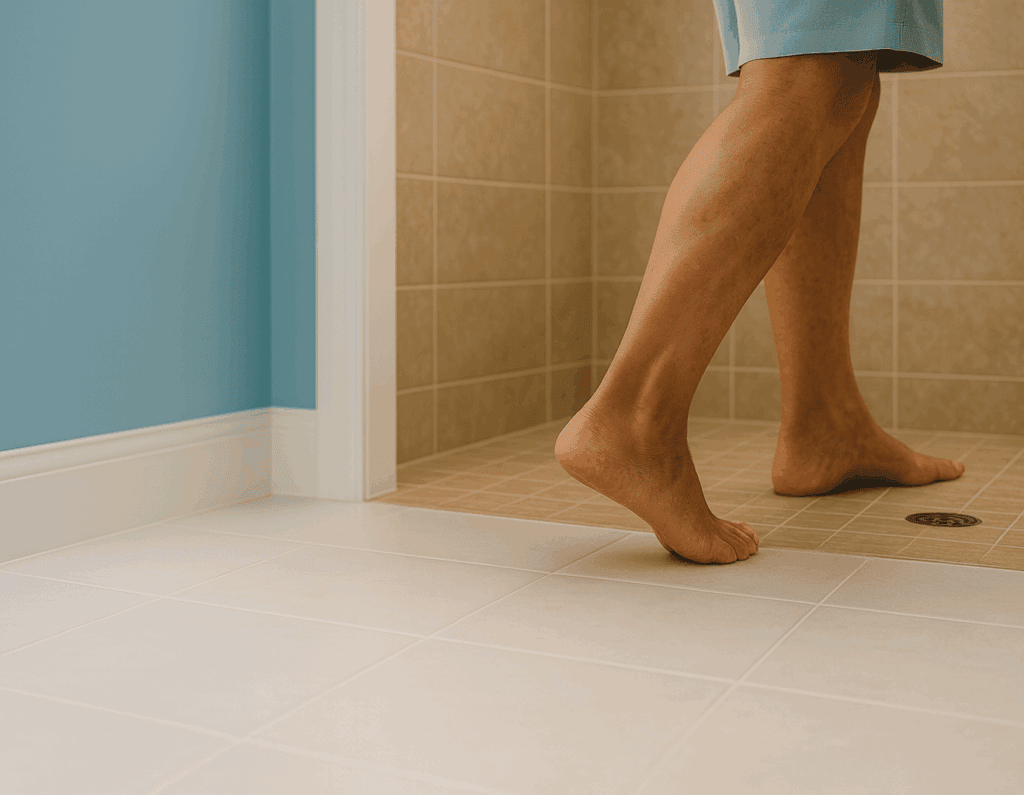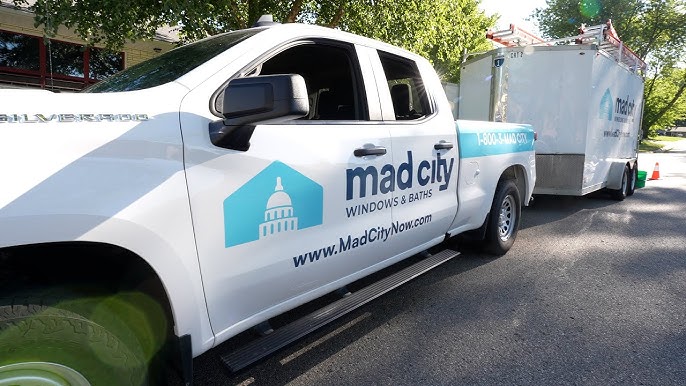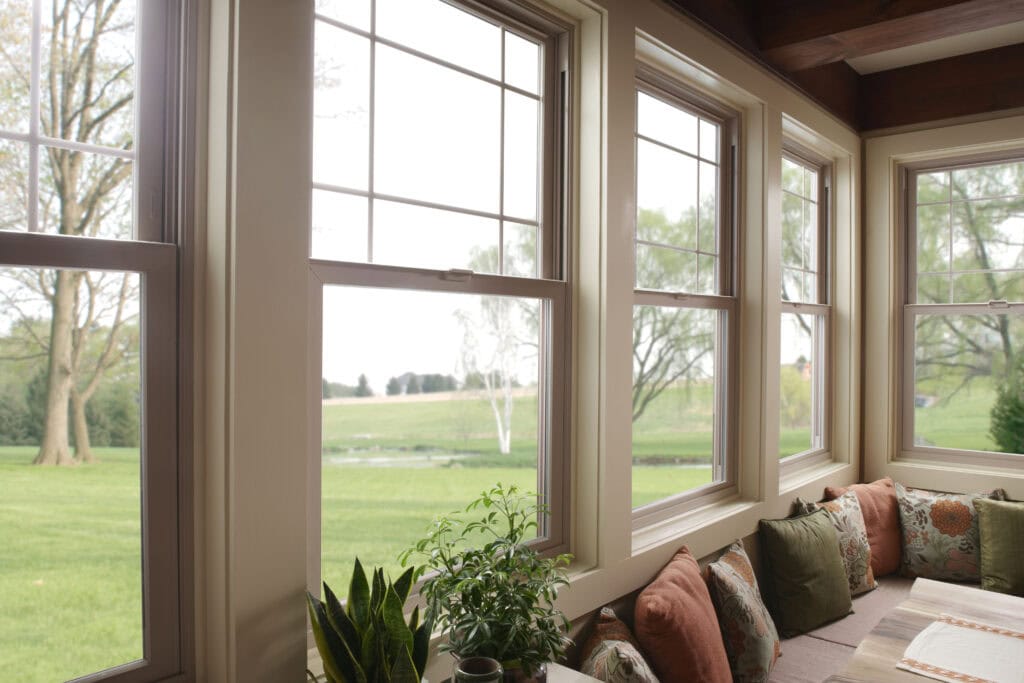
If you want the perfect sunroom, you have to choose the right windows. Your sunroom should be a space where natural light pours in, your comfort is maintained year-round, and your energy bills stay reasonable. But with so many options, how do you choose?
Mad City Windows experts are here to help you learn everything you need to know to select the best windows for your sunroom: energy–efficient windows that match your home’s style, your personal taste, and your needs.
Your Project Needs
Let’s start with a question: Why do you want to have a sunroom? Is it a cozy retreat for relaxing? A bright space for entertaining? Or maybe it’s an all-season room to enjoy in any weather?
Knowing the “why” behind your sunroom windows installation will make it easier to choose styles, materials, ventilation, and insulation.
Key Questions
- What’s the climate in your area?
- How often will you use the sunroom, and in what seasons?
- Do you need privacy from neighbors, or do you want to maximize your view?
- What’s your budget for the project?
Types of Windows Suitable for Sunrooms
Your choice of sunroom window style defines the atmosphere, functionality, and comfort of your room. From maximum natural light and improved ventilation to unobstructed views, the right window styles can transform how you enjoy your space.
Casement Windows
Casement windows are recommended if you want the best energy–efficiency. Imagine sitting in your sunroom on a warm spring day, feeling a refreshing cross-breeze created by these sunroom windows. Hinged at the side, they swing outward with a simple crank handle, which makes them easy to operate in hard-to-reach places.
Pros ✅
- Excellent for creating airflow, ideal for homes in warmer climates.
- Tight seals help reduce energy costs by preventing drafts.
- Easy to open and close, even for older homeowners or those with limited mobility.
Cons ❌
- Need outdoor clearance to open, which may be tricky near patios or walkways.
- May be more vulnerable to damage in strong winds if left open.
Sliding Windows
If you’ve always dreamt about a panoramic sunset, sliding windows — and to an extent, double-hung types — are likely the option for you. Sliding types offer a sleek, modern solution for sunrooms. They open horizontally along a track, saving space and providing unobstructed views. They are best for homeowners looking for practicality without sacrificing aesthetics.
Pros ✅
- Smooth operation and simple cleaning make them low-maintenance.
- Space-saving design works well in compact areas or near furniture.
Cons ❌
- Limited airflow compared to casement.
- Tracks can accumulate dirt, requiring regular maintenance to stay functional.
Picture Windows
Picture windows, also called “fixed windows”, are all about maximizing natural light and creating stunning views. These large, stationary panes are perfect for sunrooms that overlook a garden or scenic backyard. If your goal is to highlight a gorgeous view while making your sunroom feel open and bright, opt for these.
Pros ✅
- Frame outdoor scenery beautifully, almost like a piece of artwork.
- Improve insulation due to their fixed design, helping to maintain temperature stability.
Cons ❌
- No ventilation since they don’t open.
- Must be paired with operable types for airflow.
Awning Windows
Awning windows add versatility to your sunroom. Hinged at the top and opening outward, they provide ventilation even during light rain. They’re the best windows if you want to enjoy fresh air without worrying about water entering the space. You can pair them with sliding or picture windows for added functionality or ventilation.
Pros ✅
- Great for all-weather airflow, keeping your sunroom fresh and comfortable.
- Compact design works well alongside larger fixed types.
Cons ❌
- Limited sizes
Materials Used in Sunroom Windows
Your choice of window frame materials determines their durability, maintenance, and aesthetics. From cost-effective vinyl windows to the timeless appeal of wood, each one brings its own set of benefits and challenges.
Vinyl Windows
Vinyl windows are a go-to choice if you want something affordable and energy-efficient. Want to design a sunroom to use year-round without stretching your budget? Vinyl might be your best bet.
Pros ✅
- Resistant to moisture, making them great for homes in humid climates.
- Require little maintenance; just occasional cleaning with soap and water.
Cons ❌
- Can’t be customized as much compared to wood or fiberglass.
Fiberglass Frames
Fiberglass is the workhorse of window materials. It blends strength, durability, and energy efficiency. If you live in an area with fluctuating temperatures, fiberglass types are worth considering.
Pros ✅
- Minimal expansion and contraction, ensuring tight seals that save on energy costs.
- Long-lasting and weather-resistant, perfect for sunrooms exposed to the elements.
Cons ❌
- Higher upfront costs, though the investment pays off in longevity.
Wood Frames
If you want something that maximizes the “look” of a window, wood frames offer unmatched beauty and warmth. Whether stained to highlight their natural grain or painted to match your sunroom design, wood frames are timeless.
Pros ✅
- Customizable to fit any sunroom style, from traditional to contemporary.
- Adds a classic, high-end feel to your space.
Cons ❌
- Require regular upkeep to prevent warping, rotting, or termite damage.
Energy Efficiency Considerations
Because a sunroom’s walls are predominantly glass, poorly insulated ones can result in fluctuating temperatures and higher energy bills. Energy–efficient windows create a space that’s comfortable year-round while also reducing your environmental impact and saving money.
Features to Look For
Energy–efficient windows are designed with specific technologies to improve insulation and temperature control. Let’s have a look at key energy-efficiency features to look for:
Low-E Glass
Low-emissivity glass comes with a special coating that reflects heat. In the summer, it keeps your sunroom cool by deflecting solar heat, and in the winter, traps warmth inside.
If your sunroom is in direct sunlight for most of the day, selecting windows with Low-E glass will help regulate the temperature, which means less reliance on heating or air conditioning.
Double or Triple Panes
Single-pane options don’t cut it for sunrooms. If you want energy–efficient windows, go for double or triple panes. They provide excellent insulation by creating a barrier between the outdoor and indoor climates.
The space between panes is often filled with air or gas, which acts as a buffer to minimize heat transfer. This feature is especially useful in areas with harsh winters or hot summers, as it helps maintain a consistent temperature inside your sunroom.
Argon Gas Filling
Argon, a non-toxic and odorless gas, is often used between window panes to enhance insulation. It’s denser than air, which reduces thermal conductivity and prevents drafts. Argon gas-filled windows are perfect for maintaining clear views and low energy costs.
Warm-Edge Spacers
While less common, this spacer separates glass panes and lowers the chance of condensation forming at the edges, ensuring better insulation and longevity.
Design and Aesthetic
The look and feel of your sunroom depend a lot on your design choices. When shopping for designs, think about how your windows will integrate into your sunroom’s layout and enhance its aesthetic appeal. After all, your sunroom is not just an extension of your house; it’s a space that should feel uniquely yours.
Grids or No Grids
Grids add a timeless, classic look that pairs well with traditional home styles. If your home has a colonial or cottage feel, grid options can seamlessly match the design. If you prefer to be grid-free, expect a sleek, modern look. They’re perfect if you want an unobstructed view of the garden or yard and strongly want that “Marie Kondo” minimalist aesthetic.
Custom Colors
Matching your sunroom windows to your home’s interior or exterior color palette can create a harmonious look. Custom colors let you tailor to your style, whether you’re choosing ones with bold hues to make a statement or neutral tones to blend in.
Blinds Between Glass
Blinds between glass panes offer a clean, modern solution for privacy and light control. These eliminate the need for traditional curtains or shades, making them a practical choice if you prefer sunroom windows with a clutter-free design. The best part is that they’re easy to maintain and keep dust-free.
Window Shapes
Go for non-traditional shapes like arches, trapezoids, or octagons if you want more character in your sunroom. These unique shapes can act as focal points and make the space feel more dynamic and personalized.
Maintenance and Durability
Because sunrooms often consist of large glass panels that are exposed to varying weather conditions, the windows must be robust enough to handle the stress without frequent repairs. The right choice of material and a regular maintenance routine will ensure your sunroom remains functional and visually appealing for years to come.
Why Maintenance Matters?
Unlike windows in other areas of your home, sunroom windows are subjected to more direct sunlight, frequent use, and potentially harsh weather. Over time, dirt, moisture, and temperature changes can take a toll on even the highest-quality windows. If you skip on maintenance, issues like foggy glass, warped frames, or reduced energy efficiency can diminish the comfort and beauty of your sunroom.
Maintenance Tips for Long-Lasting Windows
Taking care of your sunroom windows doesn’t have to be a time-consuming task. With a few simple habits, you can protect your investment and keep them looking great:
- Clean regularly: Wipe down glass panels and tracks with mild detergent and water to remove dirt, dust, and debris that can accumulate over time.
- Check weatherstripping: Inspect the seals around your windows annually. If they’re cracked or worn, replace them to maintain proper insulation and prevent air leaks.
- Protect wood frames: Refinish wood frames every few years to guard against moisture and prevent warping or rotting. Choose weather-resistant stains or paints for added durability.
- Lubricate moving parts: For operable windows like sliding or casement styles, apply a silicone-based lubricant to tracks and hinges to keep them operating smoothly.
Choosing Low-Maintenance Options
If your schedule doesn’t leave much time for upkeep, consider vinyl or fiberglass windows for a sunroom.
- Vinyl windows are resistant to moisture, fading, and warping, making them a popular choice for homeowners who want durability without the hassle.
- Fiberglass windows are equally low-maintenance and offer exceptional strength, even in areas with extreme temperature fluctuations.
For those who prefer the aesthetic charm of wood but worry about maintenance, composite windows with a wood-like finish can be an excellent alternative.
What Affects the Cost?
The overall window cost depends on more factors than just materials and size. Here are other things that influence the total cost of your sunroom windows:
- Size and number of windows: Larger windows or rooms with many sunroom glass panels will increase costs.
- Energy-efficient features: Adding double or triple panes, Low-E glass, or argon gas filling boosts insulation but raises the price.
- Customization: Unique shapes, custom colors, or grid designs may come with an additional charge.
- Installation complexity: If your sunroom requires structural adjustments or reinforcements, expect labor costs to rise.
Conclusion
Choosing the perfect windows for your sunroom requires careful consideration of aesthetics, functionality, and budget. Every decision, from the type of window to the materials, plays a role in creating the perfect space for your home.
Ready to find the right ones? Contact Mad City Windows today to explore the best windows and start designing your dream sunroom!













